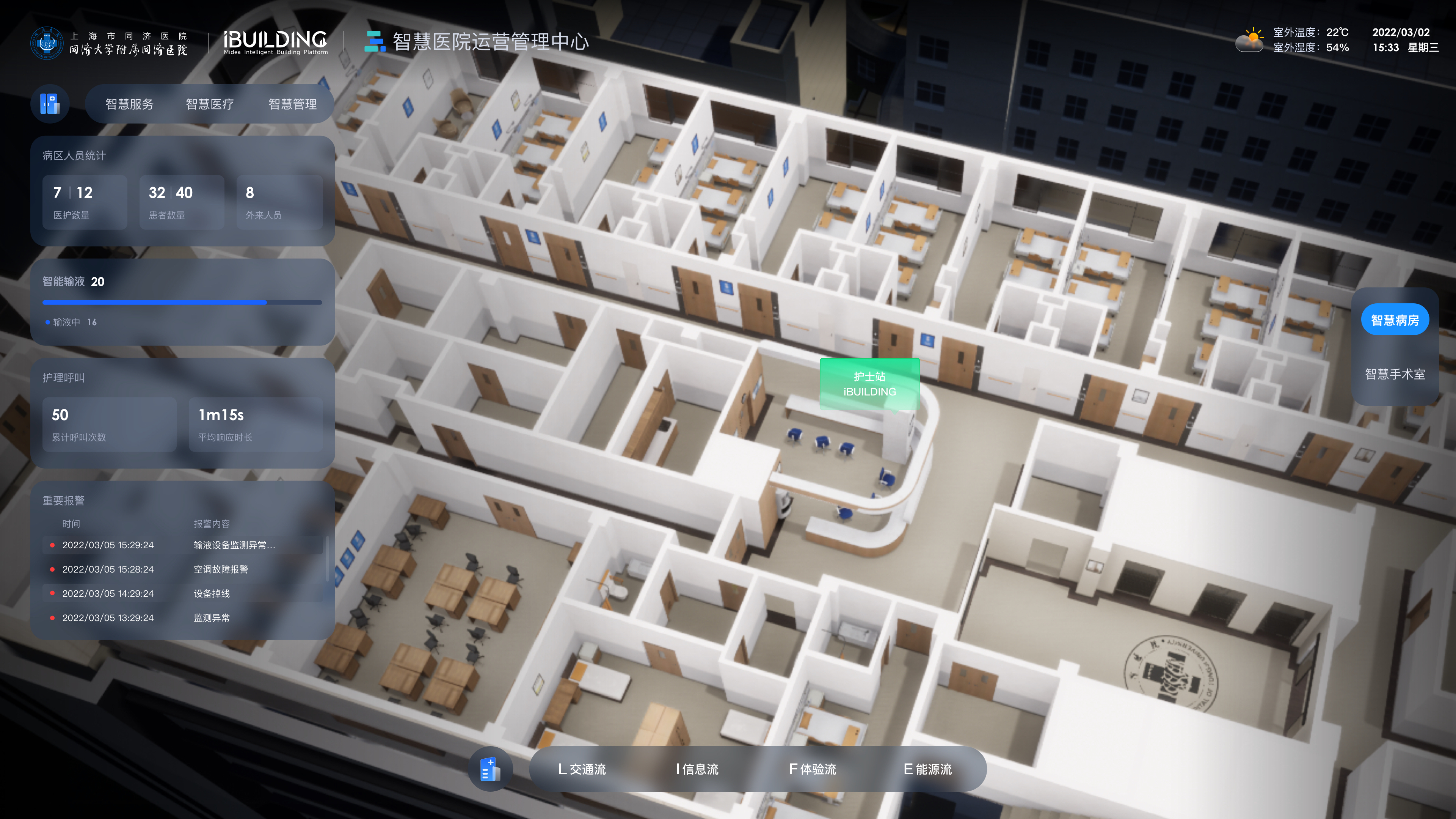
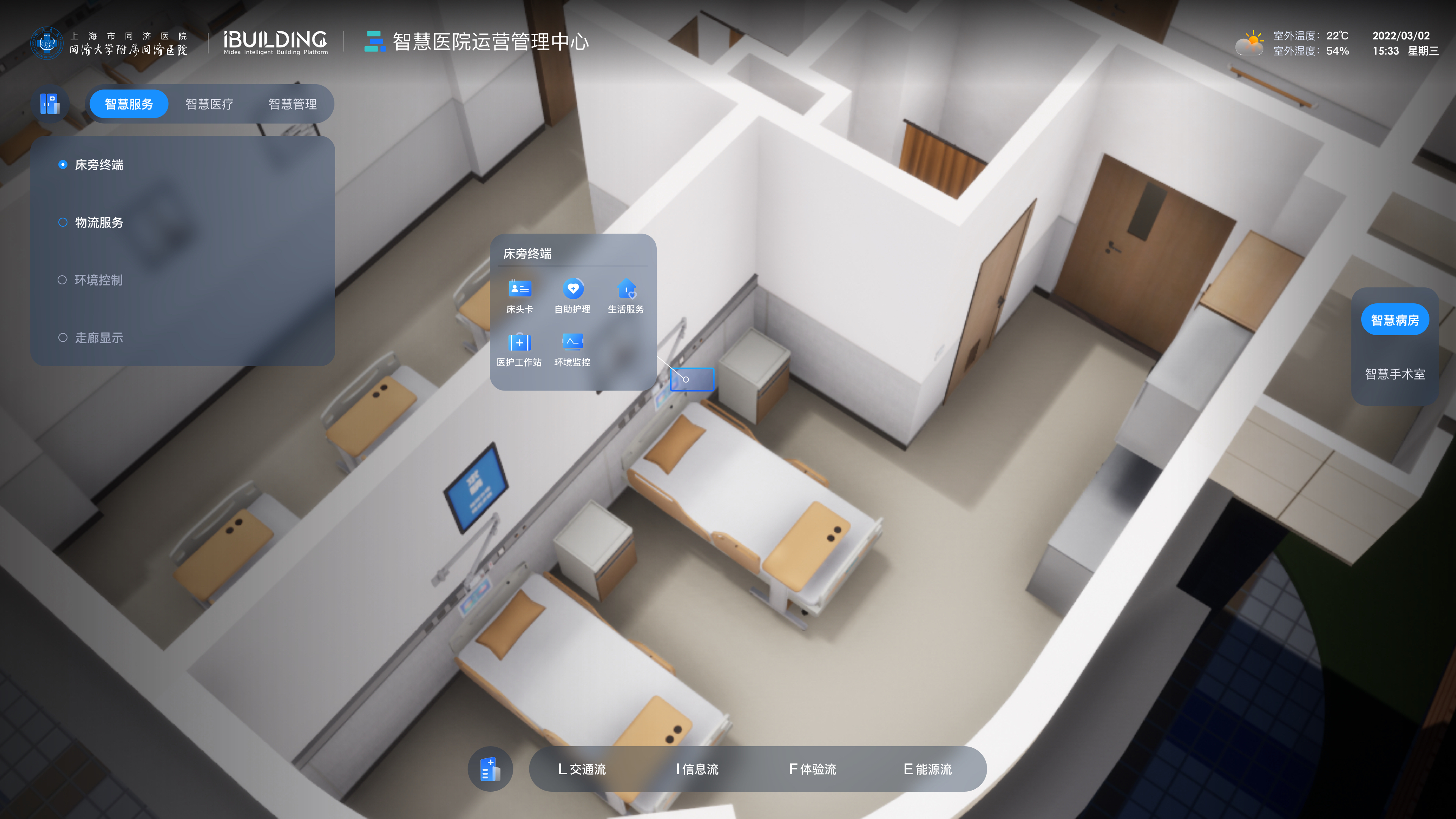
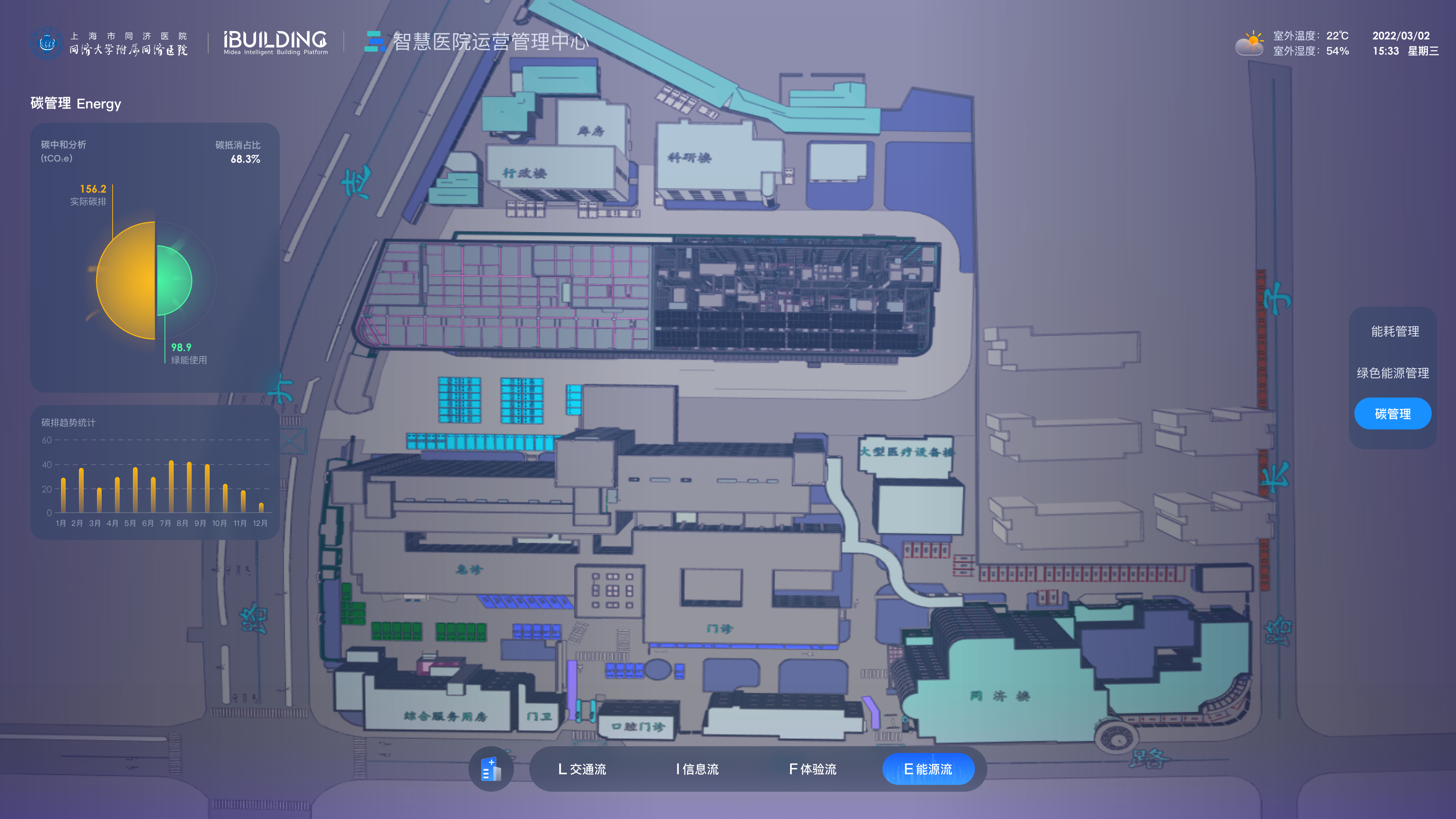
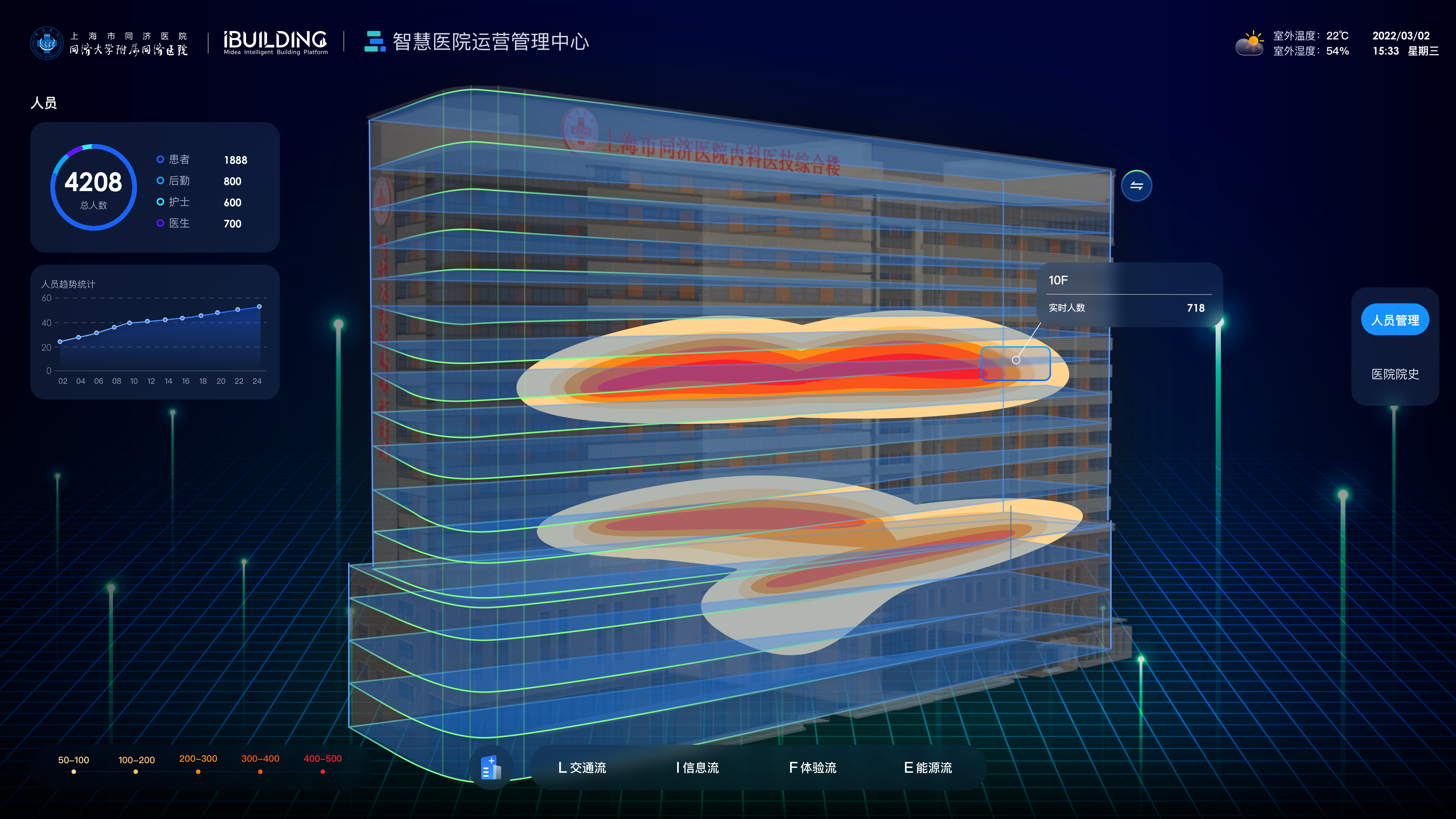
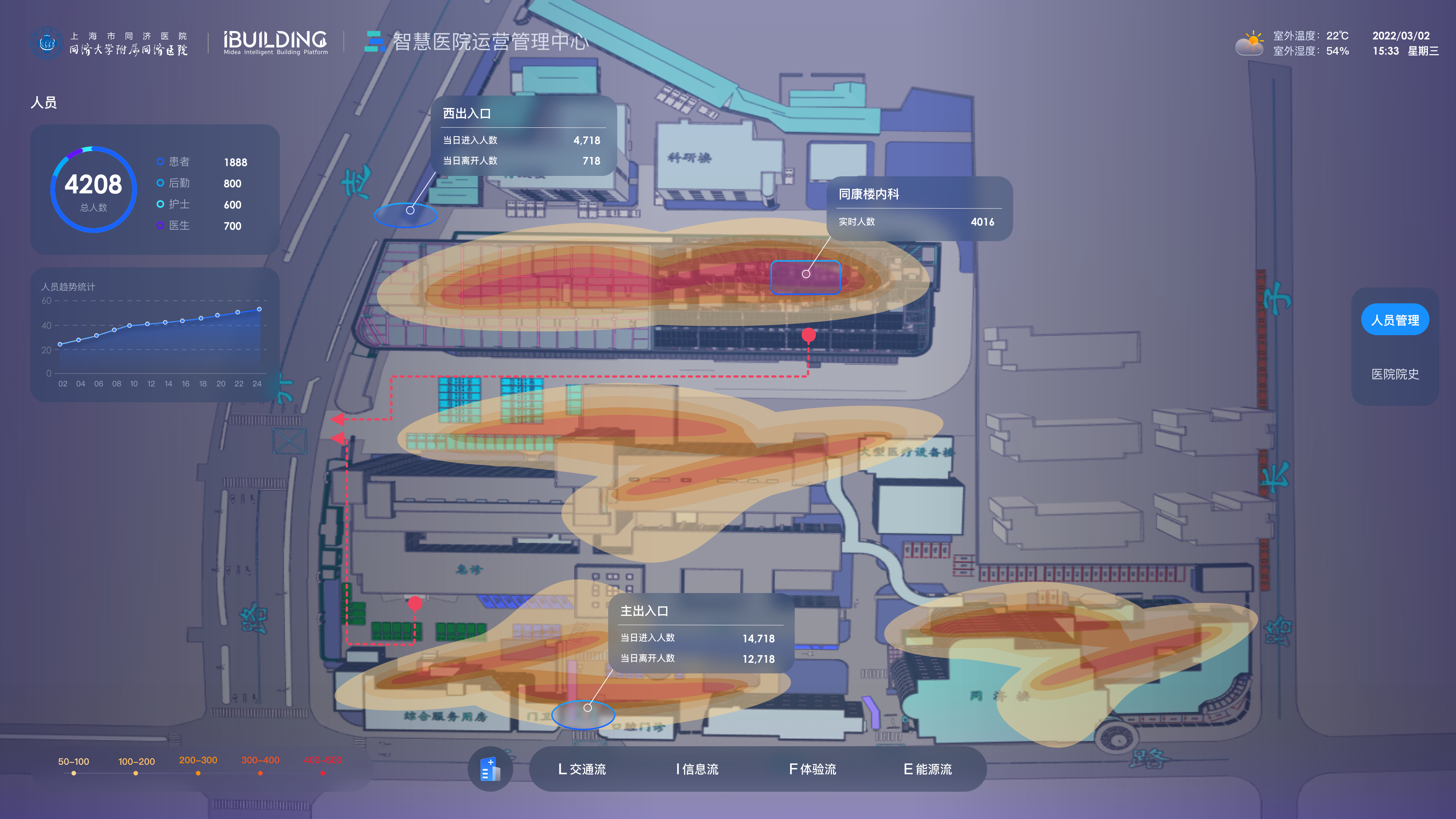
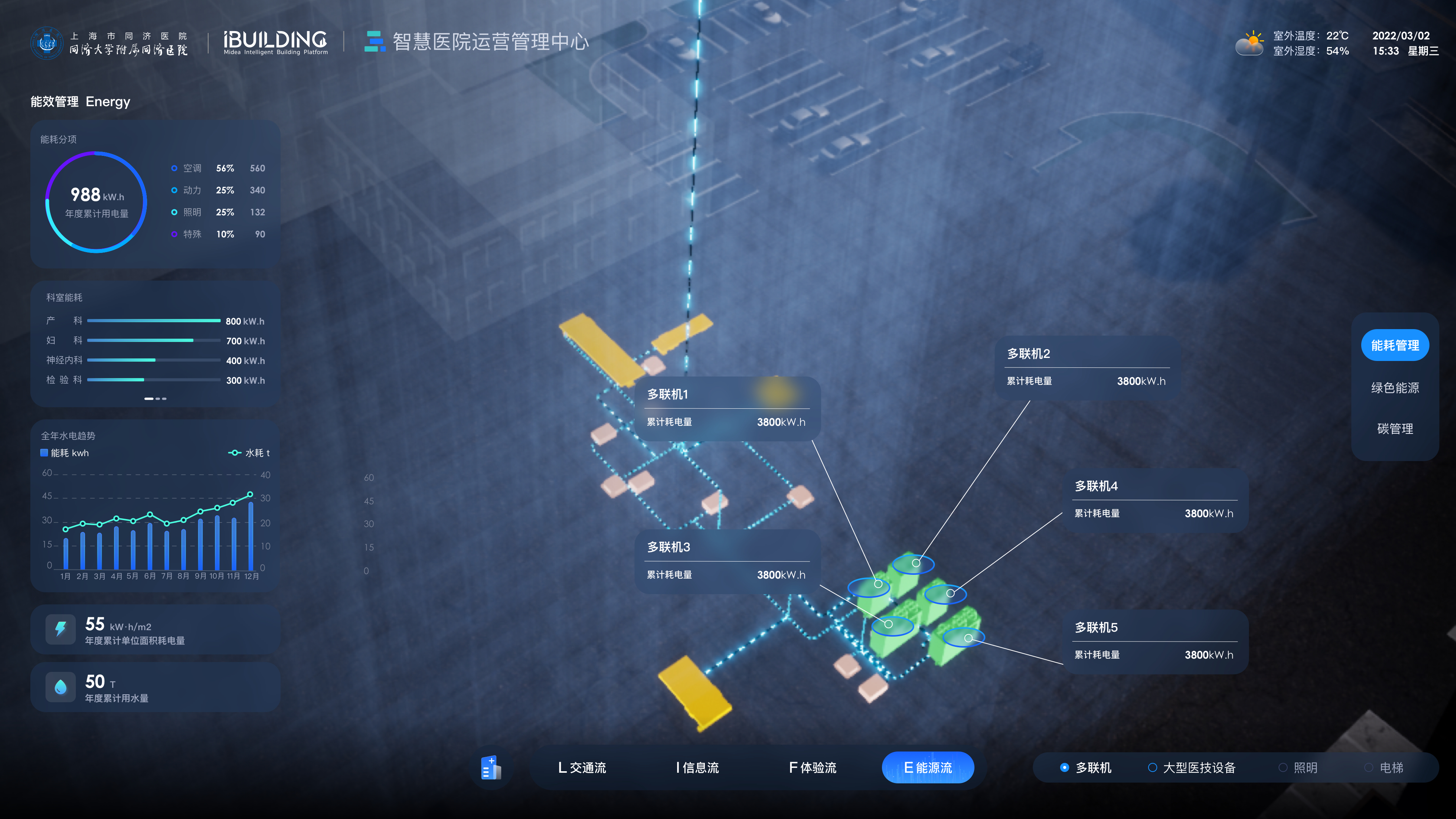
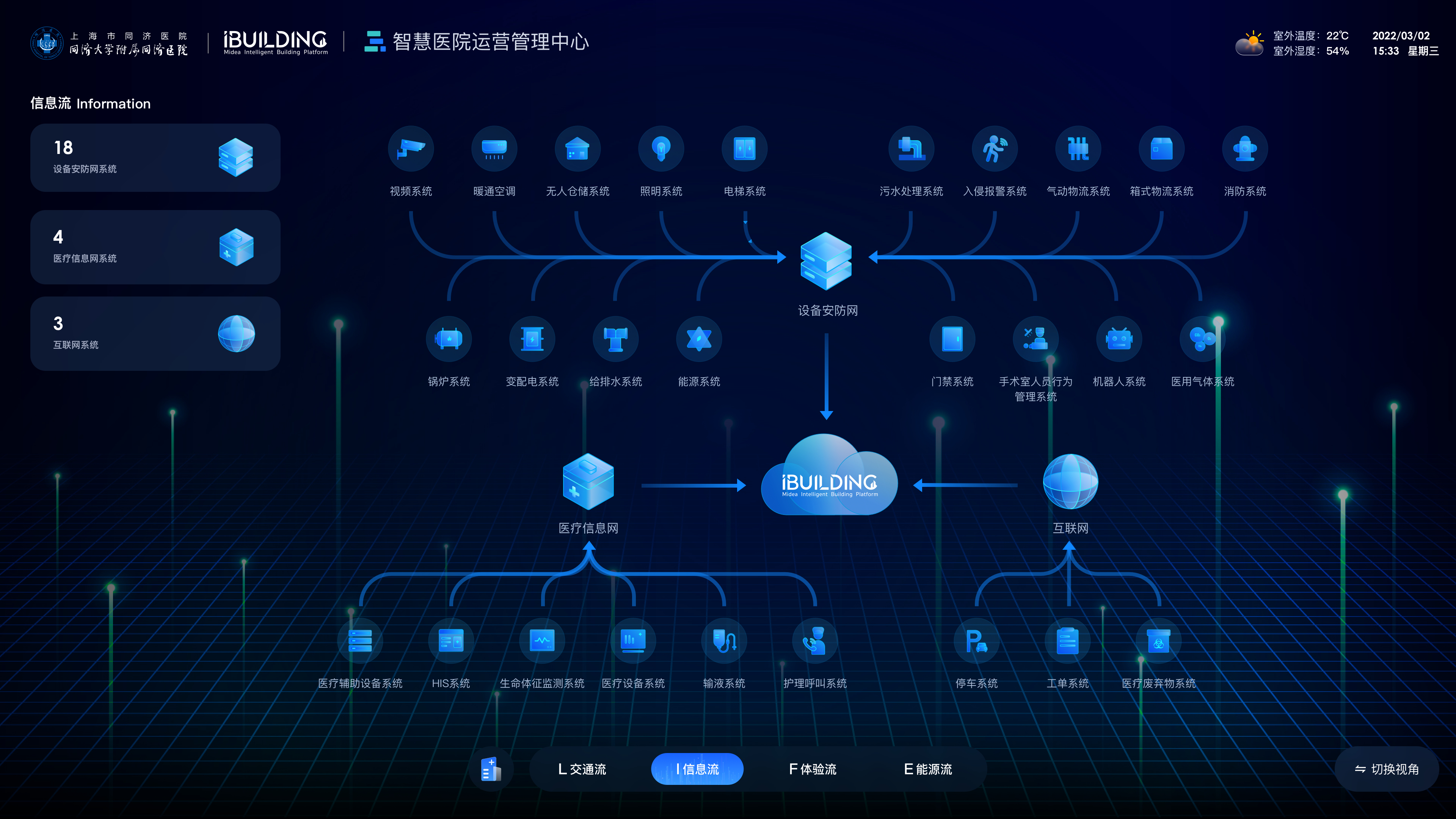
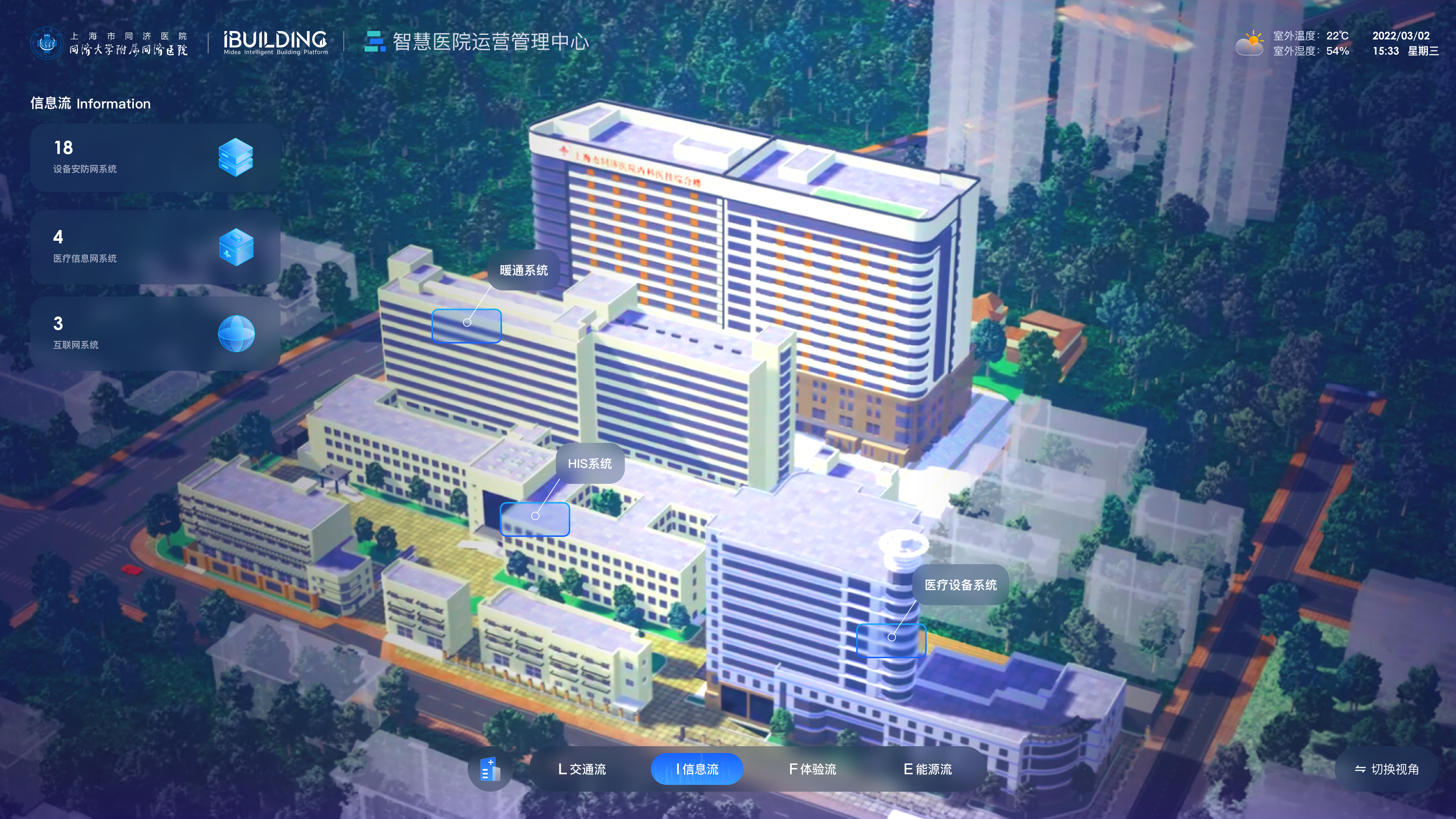
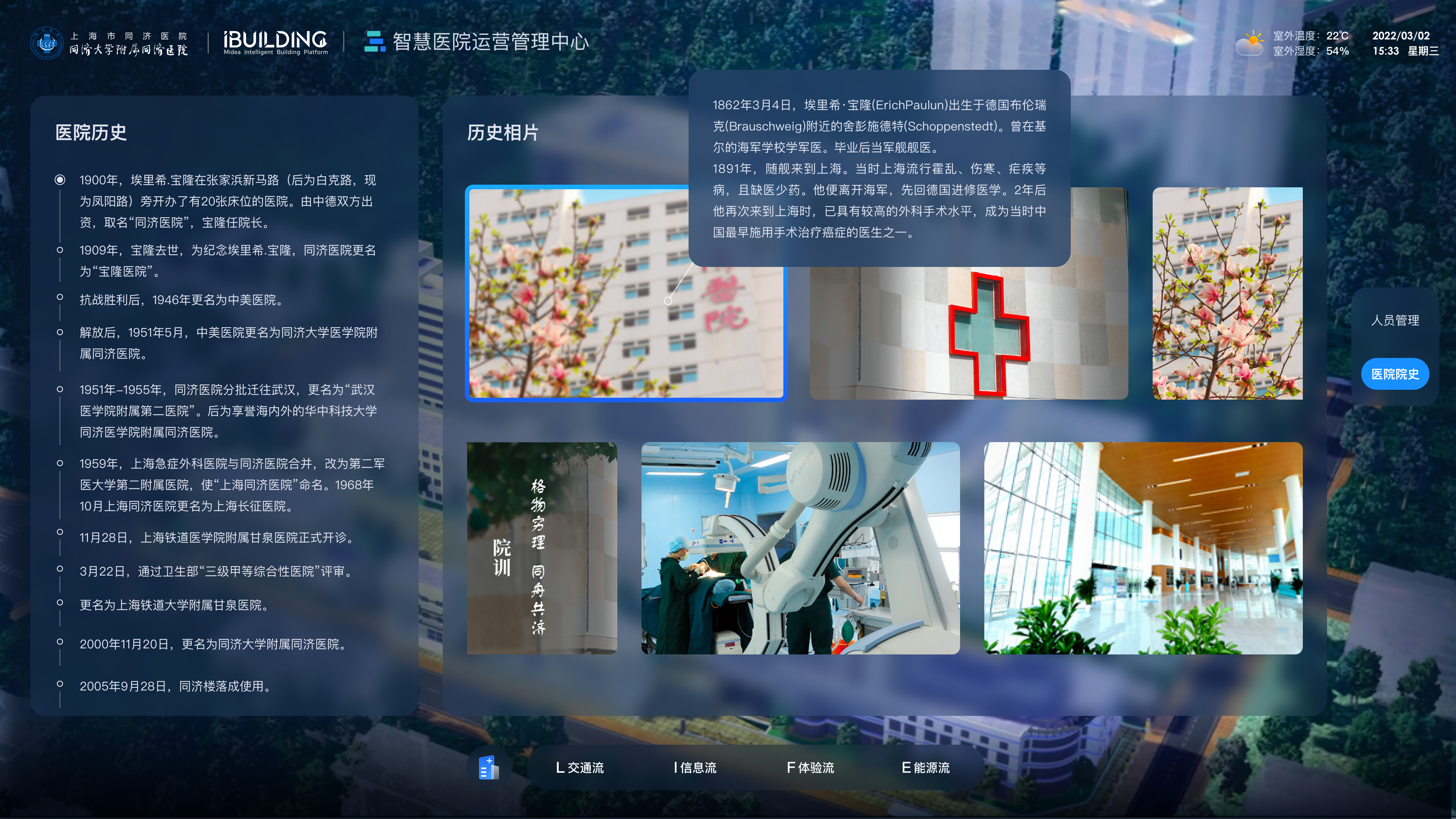
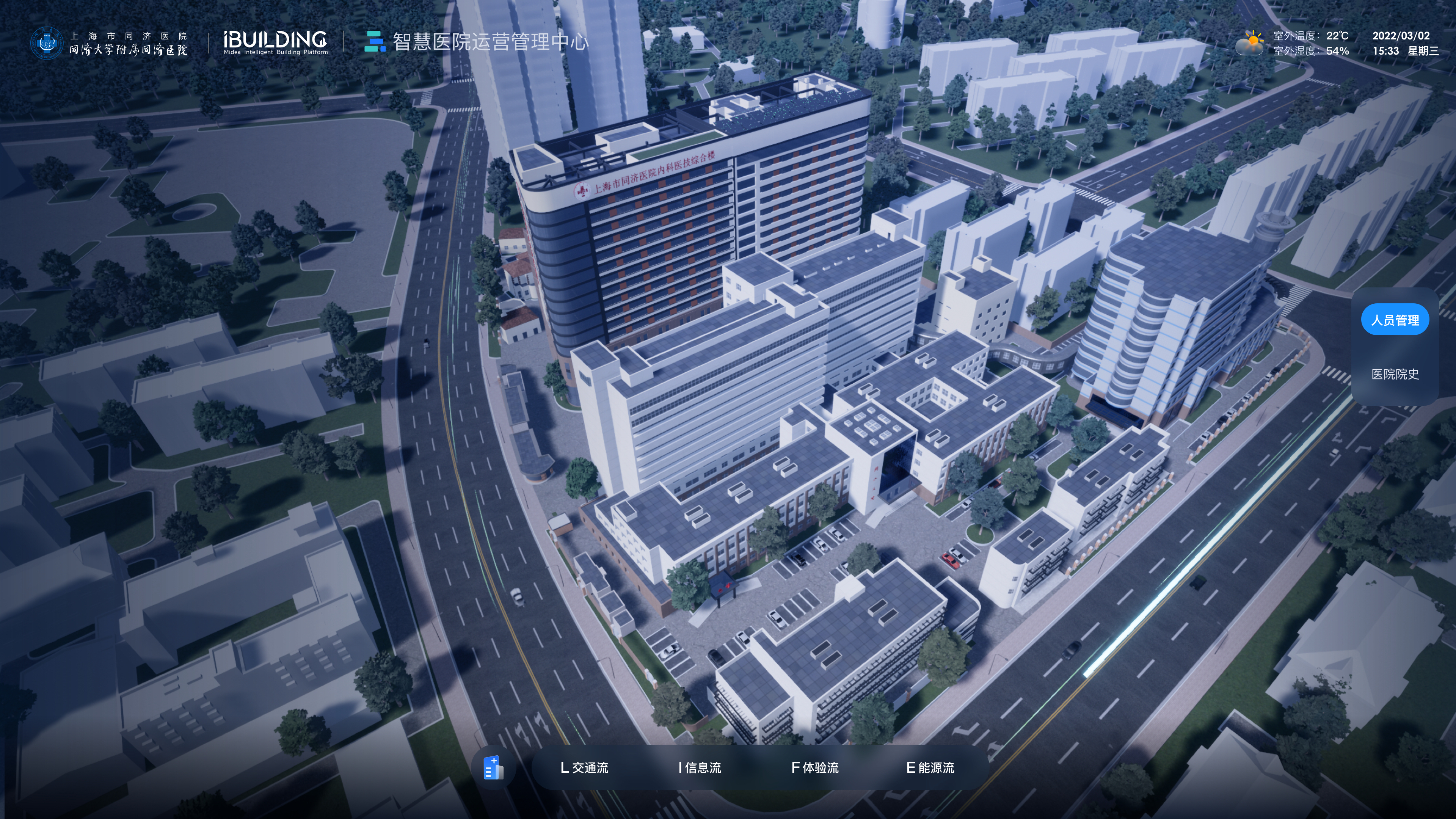
Image Credit :
Project Overview
Several problems exist in the current medical sector, such as an unsound management system, high cost, a lack of channels and low accessibility. In particular, the inefficient system and low quality service prevent the public from getting medical treatment and result in high cost. These problems are caused by a lack of medical information, unbalanced distribution of resources and inadequate supervision mechanisms. It is imperative for China to establish a sound digital health system, promote structural reform and address the urgent needs of high quality medical services.
Organisation
Midea Building Technologies Division
Team
Project Brief
Based on analysis of the actual problems of the hospital, this software is designed to create a smart hospital with a healthy lifecycle that features data sharing, interconnection, extension and sustainability. The system analyses and summarizes data from safety and security, building control, personnel and medical waste management, and then presents some vital indicators in a systematic way. With this, staff can get a comprehensive overview of the building in a real time manner, thus carrying out intelligent monitoring and management. The software helps to save labor cost, improve management efficiency and create a smart medical system.
Project Innovation/Need
Centering around 'people' and 'equipment', this software integrates the automation system and new technologies such as cloud computing, big data, Internet of Things and AI into hospital management. It connects the flow of energy, information, logistics and experience. For example, the 3D virtual hospital modelling visualize the whole process of personnel moving; the IOC platform integrates building automation system, the special medical system and the medical information systems.
Design Challenge
This software aims at improving the efficiency and service of medical institutions as well as the experience of patients. But it faces multiple challenges such as reducing carbon emission, realizing data governance and managing efficiently. Also, it has to meet the different needs of hospitals and be connected to plenty of complex equipment.
Future Impact
The system bridges the physical distance between people and equipment, reducing energy consumption, improving efficiency, and slashing costs.
Systems - Commercial
<p>Commercial projects recognises that design is the means to create meaningful experiences for users, create value for people and drive profit for businesses.</p>
<p>All systems are designed to serve a purpose – and that purpose is to serve people. Systems design optimises systems performance by systematically focusing on the human component - human capacities, abilities, limitations and aspirations.</p>
More Details
